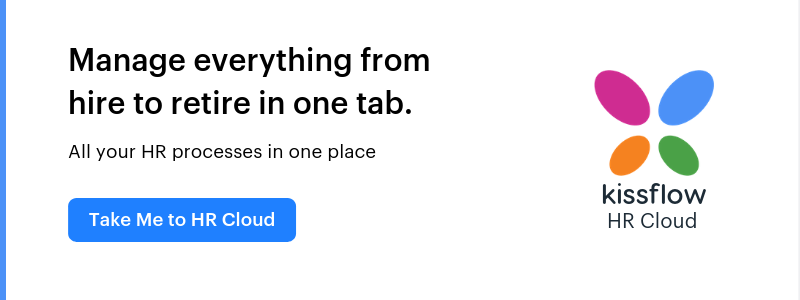Your classic leave management process is a ticking time bomb waiting to go off.
One wrong move can blow your employee satisfaction levels, workforce optimization efforts, and payroll processing all to smithereens. However, several SMBs adopt a know-it-all attitude, and oversimplify the problem with band-aid solutions to chronic issues.
This blatant disregard of a glaring problem happens when you don’t fully understand leave management. Ignorance might be blissful, but ignoring the problems in your leave management system is not going to solve them. It will only make things spiral out of control–and impact employee morale, organization culture, productivity, and financial/legal liability along the way.
Although your manual process may still be surviving in the evolving technological landscape, the dependency on manual intervention and the inaccurate data make it cumbersome. HR staff face a huge number of challenges, but the following are the worst parts of leave management that demand a technological alternative.

Managing your millennials
You may wonder what millennials have to do with your leave management process. Seeing as how this ‘tech-savvy’ generation takes up a substantial portion of your workforce, though, their needs do matter.
Technology is an integral part of every millennial’s life. Young workers like to live their life on-the-go, and complete everything from banking to shopping with a simple swipe or click.
If you ask them to send an email or, heaven forbid, fill out a form, you’re asking for trouble. Your process and strategy must be in tune with your evolving workforce, and stay compatible with them. On the contrary, common leave management tools like email threads are neither user-centric nor engaging. If you aspire to retain this generation of ‘job hoppers’ in your workforce, a radical overhaul of your leave management strategy is essential.
Daunting documentation
Manual sorting and maintenance of documents is an arduous task. Efficient and accurate documentation is vital for proper leave management. However, in your manual approach, it is difficult to document every interaction (email, phone call, or meeting). Common fallbacks like Excel sheets are neither accessible nor secure enough to store critical information.
On top of that, manually tracking time-off management in an excel sheet can cascade into a snowball of errors that stir up an avalanche of inaccuracies and compliance issues. Excel sheets can handle the process of small teams, but as your organization scales up, capturing the leave information of every employee in a huge file with numerous tabs complicates the process even further.
The accessibility hurdle
Manual leave management strategies are not employee-centric. Without access to their leave information, employees are forced to depend on their managers. And managers, who have access to these confidential databases, find them archaic and time-consuming. The time your employees spend navigating through rows and rows of Excel sheets impacts their efficiency and productivity.
While your old-school leave management strategy might save you a few bucks in investment, its time-intensive nature impacts your employees’ productivity, making it injurious to your organization’s growth. To tie up the loose ends in your leave management process, you need to offer your employees a self-service option and an on-the-go accessibility feature.
Process silos
Old-school leave management practices only cause process and data silos that kill the productivity of all your employees, especially your HR staff. Disparate data blocks don’t communicate with other HR tools like payroll and biometric access. And, HR staff spend too many hours exporting data and integrating the existing data with other administrative apps.
Impenetrable data silos restrict the visibility of employee leave information. Navigating the impenetrable vines using an outdated approach makes it impossible to analyze leave patterns and unlock insights from them. When conversations are limited or nonexistent, you discourage collaboration, impair decision making, and disrupt the value chain of your business.
Eliminate the complexities with Kissflow HR Cloud
To proactively solve all the pain points in your leave requests, ditch your disinterest and delve deeper into their root cause. Once you figure out where these pain points are, sketch a plan to take care of them. Moving on from your disconnected documentations and spreadsheets will help you battle head-on with the inefficiencies in vacation management.
The cross-functional nature of a cloud-based tool can cut through the process silos and improve the accessibility of your leave management system. These platforms seamlessly integrate with your existing HR software and provide non-redundant data, make leave policy transparent, ensure policy compliance, eliminate the time lag, and retrieve any time-off information instantly.
Quit the spreadsheet dependency and automate your leave management process with a customizable HR software like Kissflow to eliminate administrative tasks and empower your employees. Sign up today for a free demo, and see how simple time-off management can be.
Related Articles:
- How to Choosing the Best HR Software
- HR Management Software for Your Small Business
- Personnel management guide
- Leave management system steps
